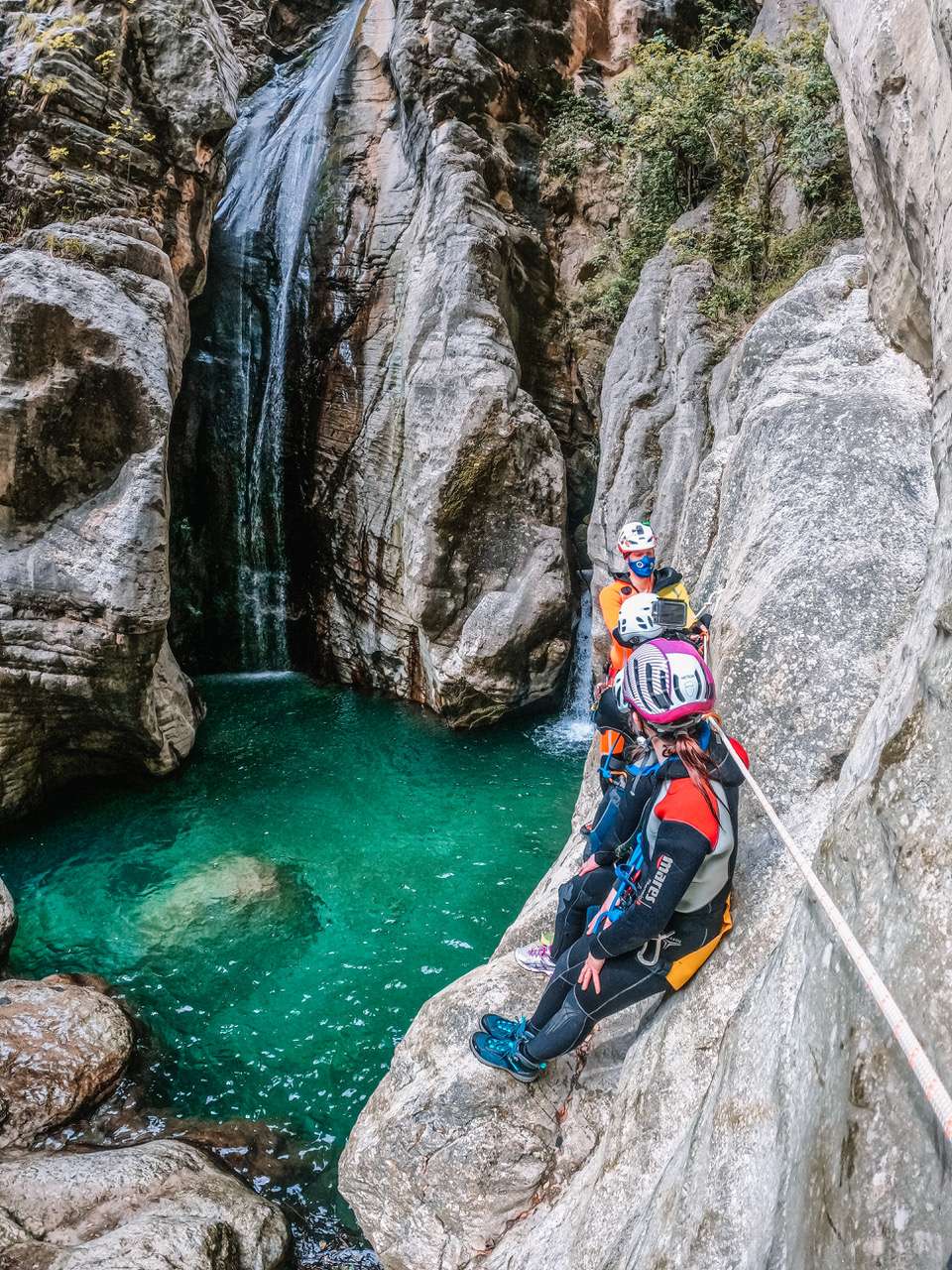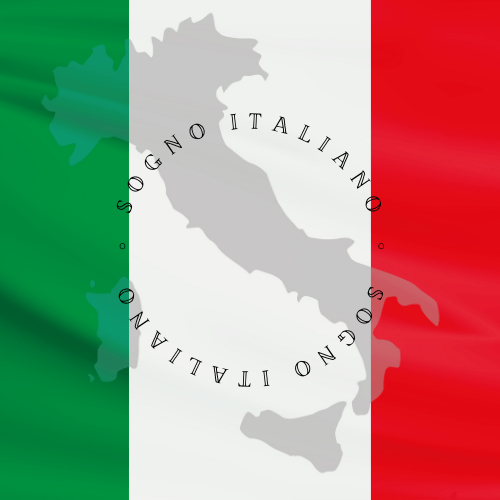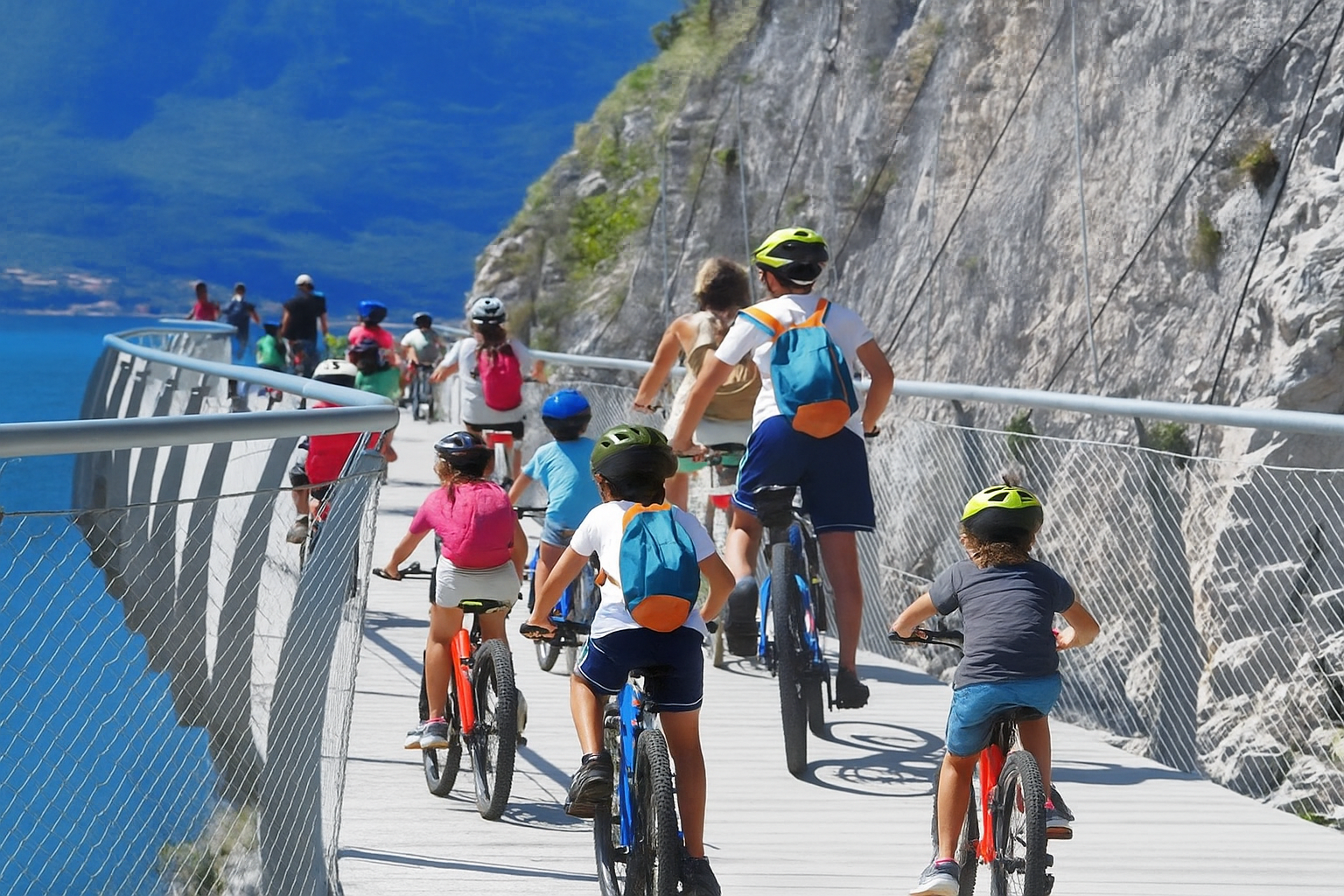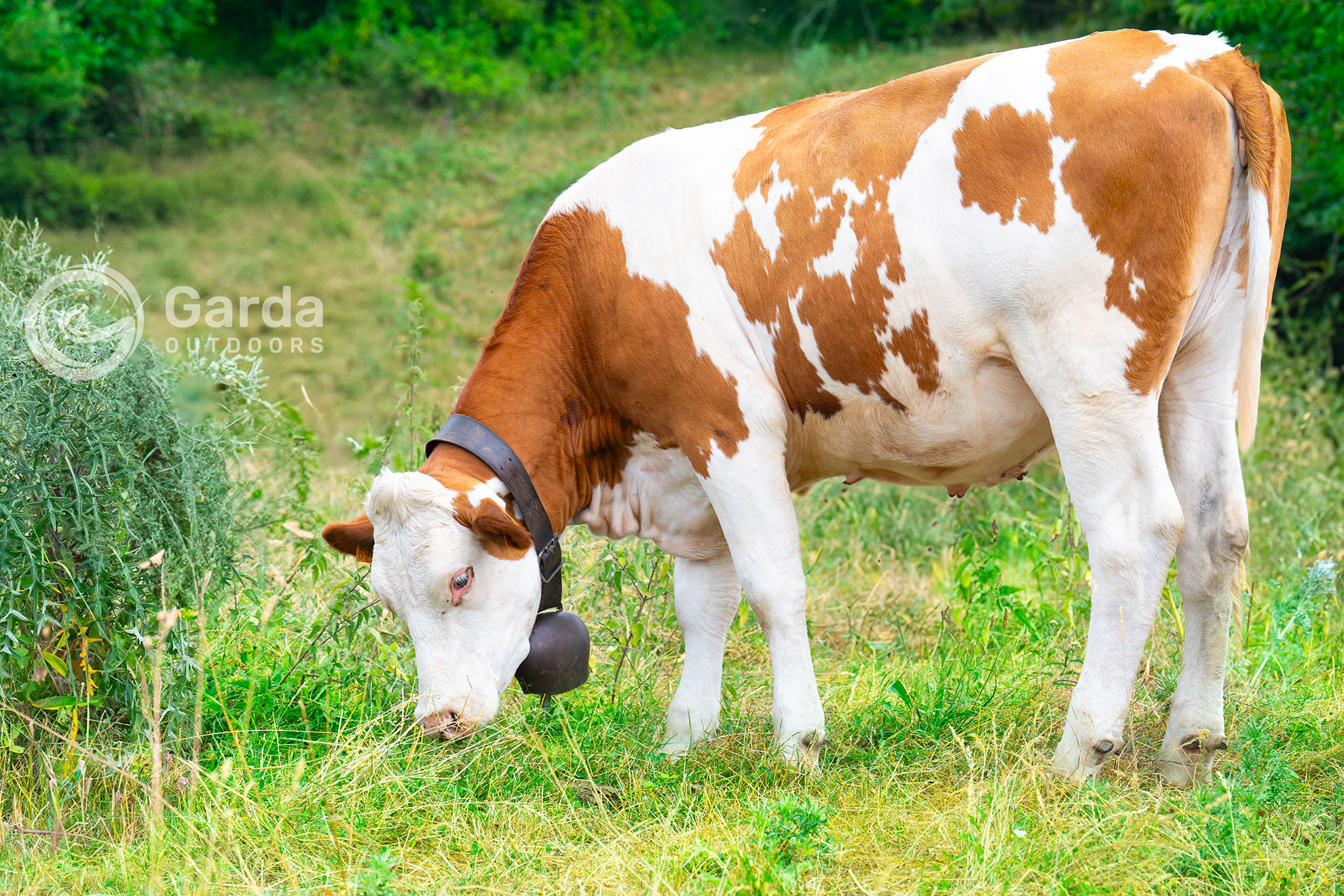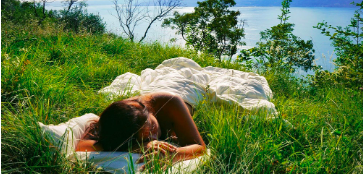Lake Garda is the ideal destination for many water sports. The variety of this area satisfies everyone’s tastes and allows you to try unique and exciting experiences among which we also find Canyoning. An increasingly popular sport, increasingly practiced and often considered as a real adventure to be experienced in the company of friends and family, also to create moments of union and alternative occasions for celebration; to test yourself in situations and exercises that you don’t try every day, to have fun in a healthy way and get away from stress and thoughts.
Now let’s go deeper into this world and discover all its characteristics through a short list of questions.
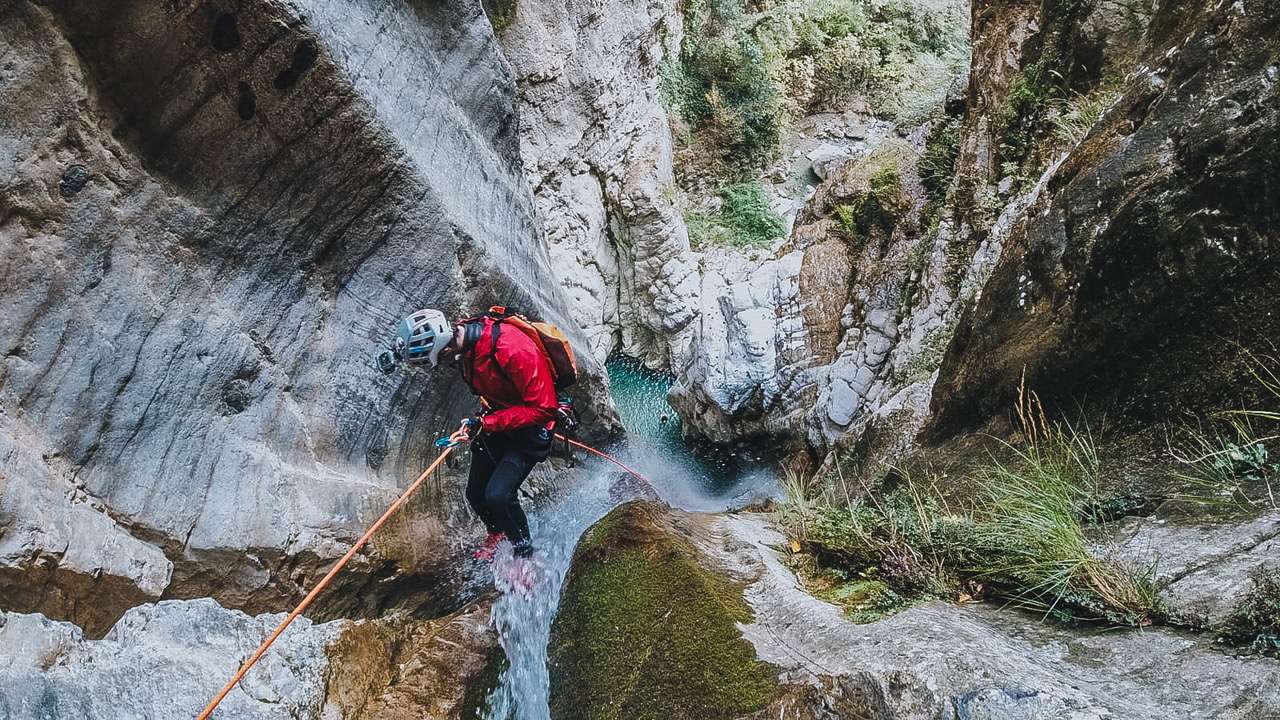
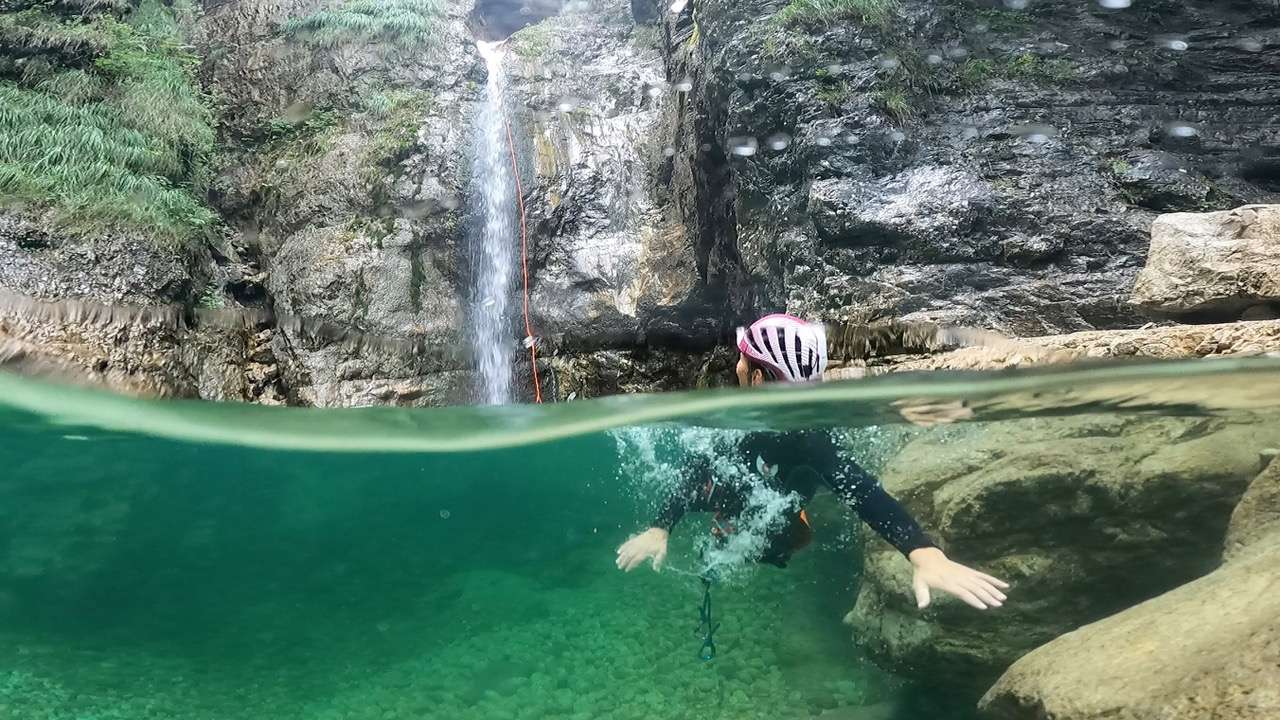
What is canyoning?
Canyoning is one of the most exciting and adrenaline-pumping sports disciplines. It consists of the descent on foot of canyons, gorges, channels, ravines and ravines carved into the rock by the natural erosion of the stream. You walk right in the smooth and water-dug passages along which you can also proceed through toboggans (natural water slides), jumps, and abseiling down the vertical waterfalls.
The main reasons for canyoning are exploration, fun, the search for contact with nature.
A constant of all the canyons is the extraordinary beauty of the natural environments they encounter, due to the interaction of various natural factors that are attractive in themselves such as: the flowing water, the rock smoothed by the stream, the typical flora and fauna. The inaccessibility by man in these environments has meant that they have remained unchanged. Therefore the canyons are and remain uncontaminated places and retain all the charm that nature has attributed to them. To visit them you have to literally go inside them, with the utmost respect and grateful to be able to observe their beauty from this privileged point of view.
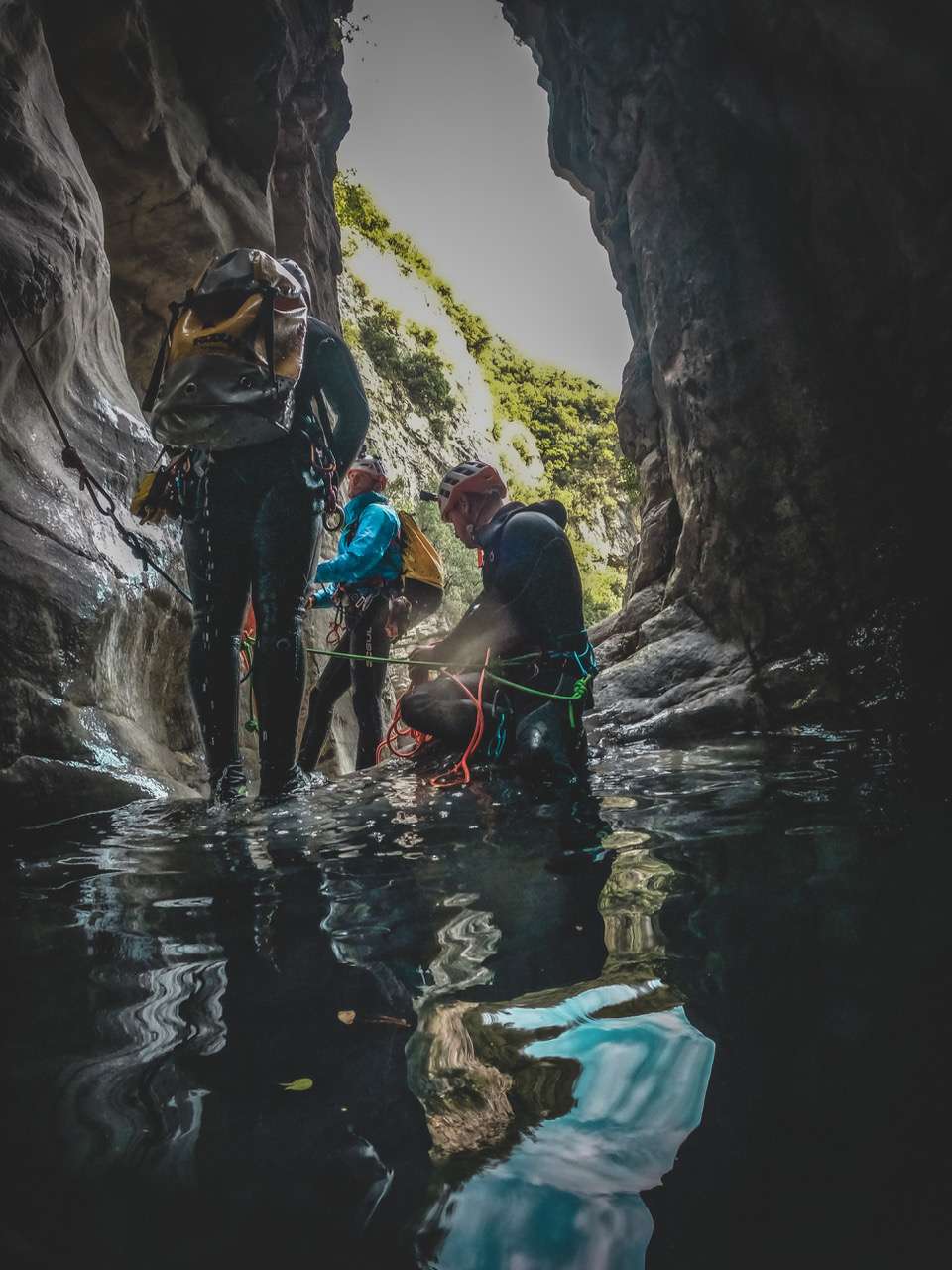
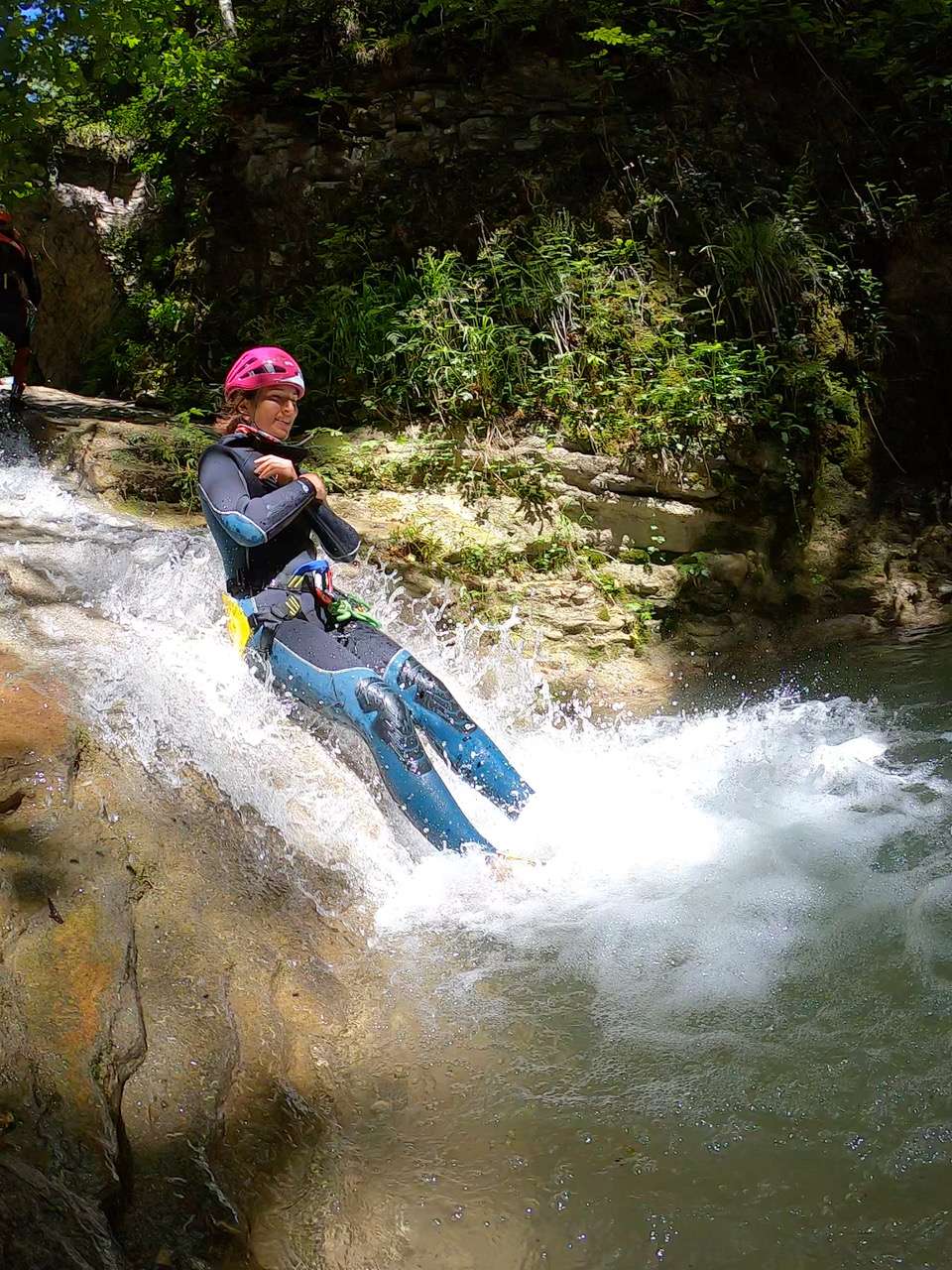
Is it a sport suitable for everyone? At what age can you start practicing it?
Amateur and recreational canyoning is a sport suitable for everyone, no specific physical preparation is required. It is not recommended for those who suffer from excessive dizziness or are very afraid of water. The minimum age to be able to start is 8-10 years.
Can canyoning be practiced on Lake Garda in all seasons?
The period in which it is possible to carry out this activity is from April to October.
What clothing/equipment do you need to practice canyoning?
The recommended clothing for the activity consists of: swimsuit, sneakers (not with smooth soles) or hiking boots, towel and complete spare clothing (shoes included, as those worn during the activity will get wet). For those who are particularly cold, a thermal shirt is also recommended.
Then, during the initial briefing, a 5 mm neoprene wetsuit is provided (to maintain a good body temperature, as the mountain streams are cool even in the height of summer), neoprene shoes, helmet, harness and technical material essential for progression.
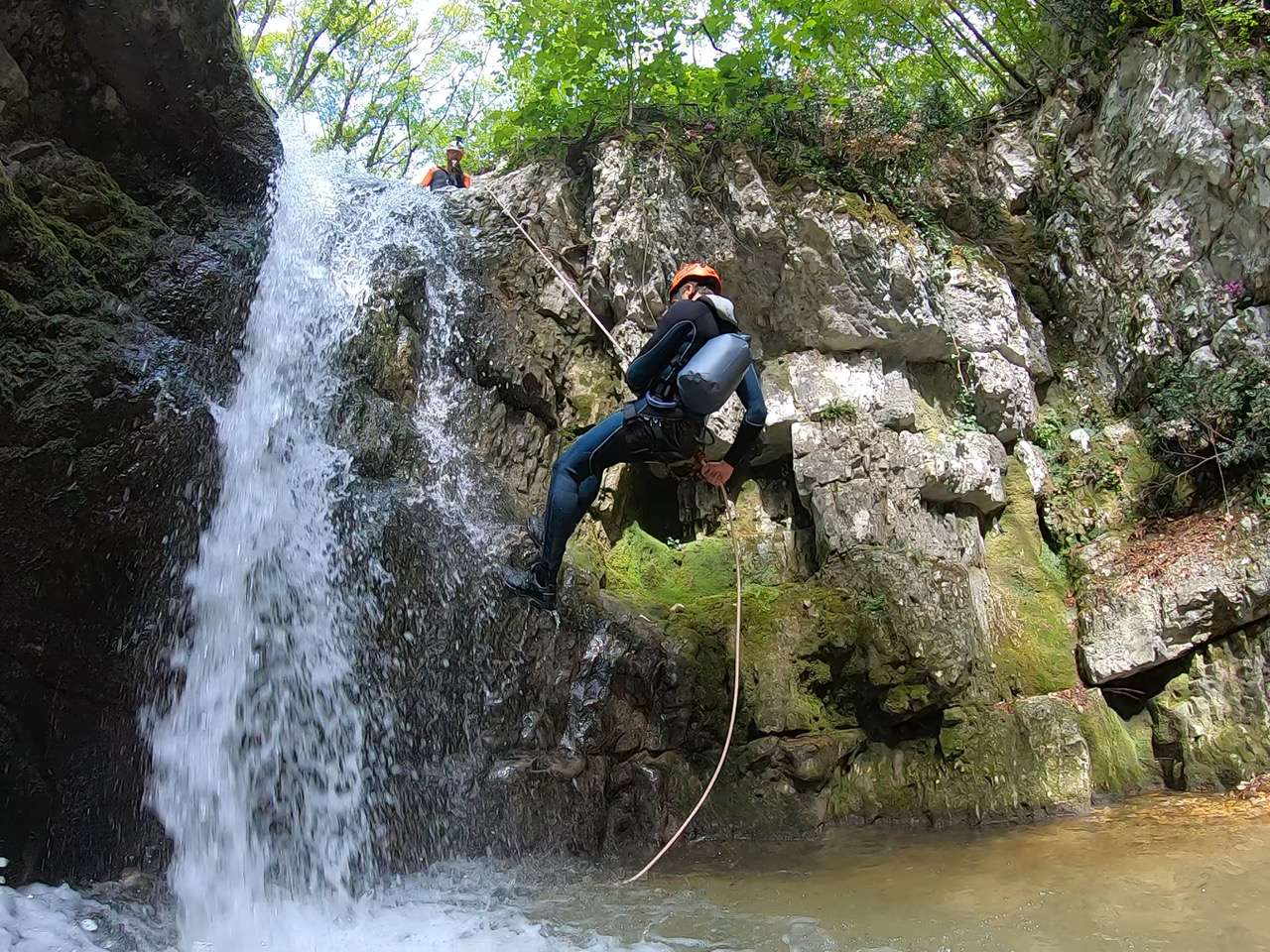
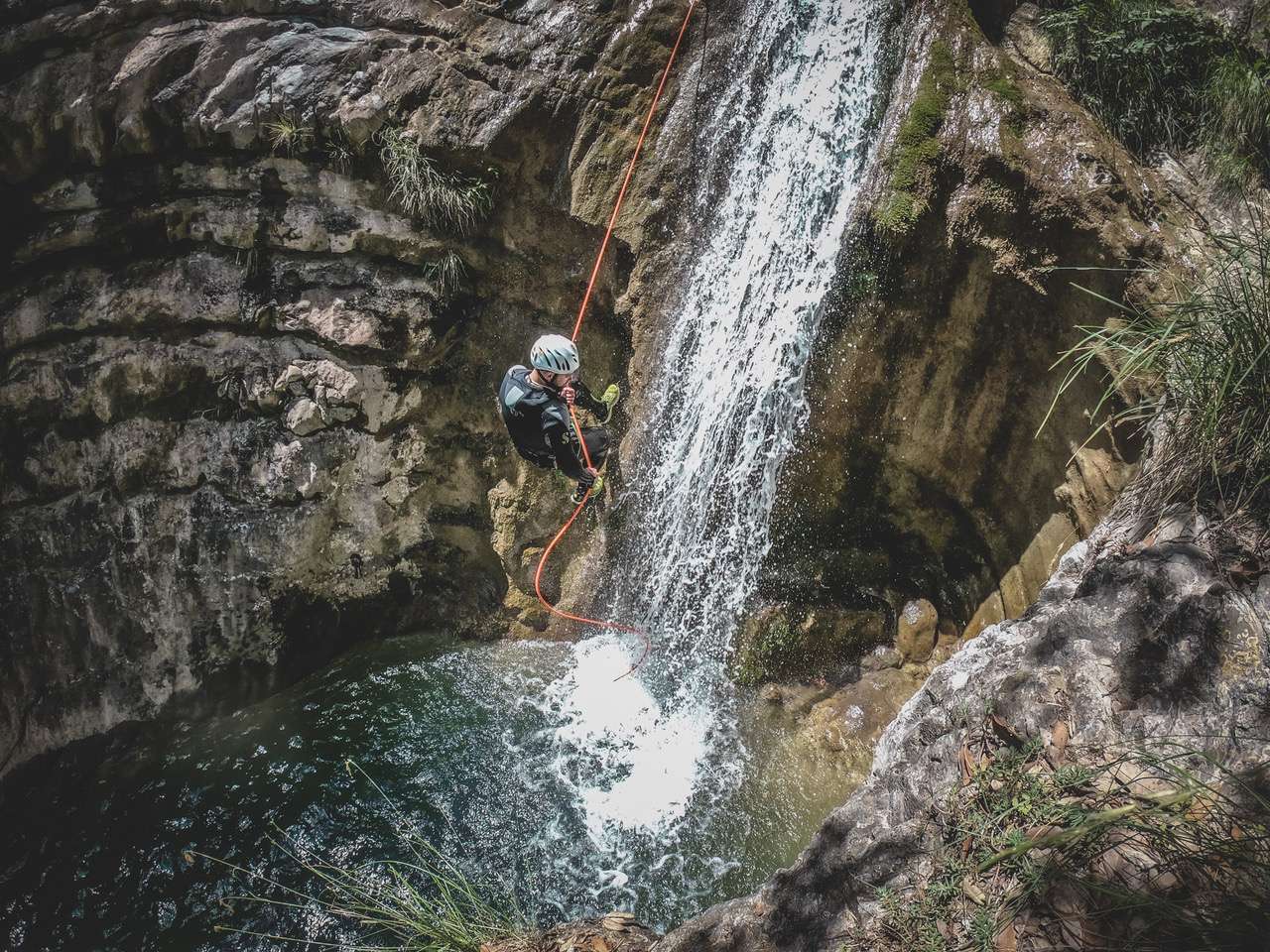
What does a canyoning trip on Lake Garda consist of? Where is it practiced?
A canyoning excursion, regardless of the route, which can have various levels of difficulty, involves progression in a stream through rappels and cableways on ropes, natural rock slides and adrenaline-pumping jumps.
Everything always takes place in complete safety thanks to the Canyon Guides – A.I.G.C. that guide and accompany both beginners and experts.
These are the key features that make the experience unique and unforgettable.
On Lake Garda there are many routes of breathtaking beauty, among which we mention: the Vajo dell’Orsa (located in the largest valley in terms of length of the Monte Baldo group and crosses it between the main ridge and the one overlooking on Vallagarina), Torrente Vione (it is characterized by thick and green vegetation, very sunny and known for two pools of water that take on an emerald green color), Torrente Campione (born in the mountains of Lake Garda and dives in it after having faced the vertiginous walls behind Campione del Garda), the Val Rua (located in the Val d’Astico area, is considered the most beautiful canyon in the province of Vicenza), the Forra di Tremosine (characterized by a beautiful panoramic view of Lake Garda and a wonderful series of waterfalls).
Do you want to try them? Contact the amazing Canyon Addicted team!
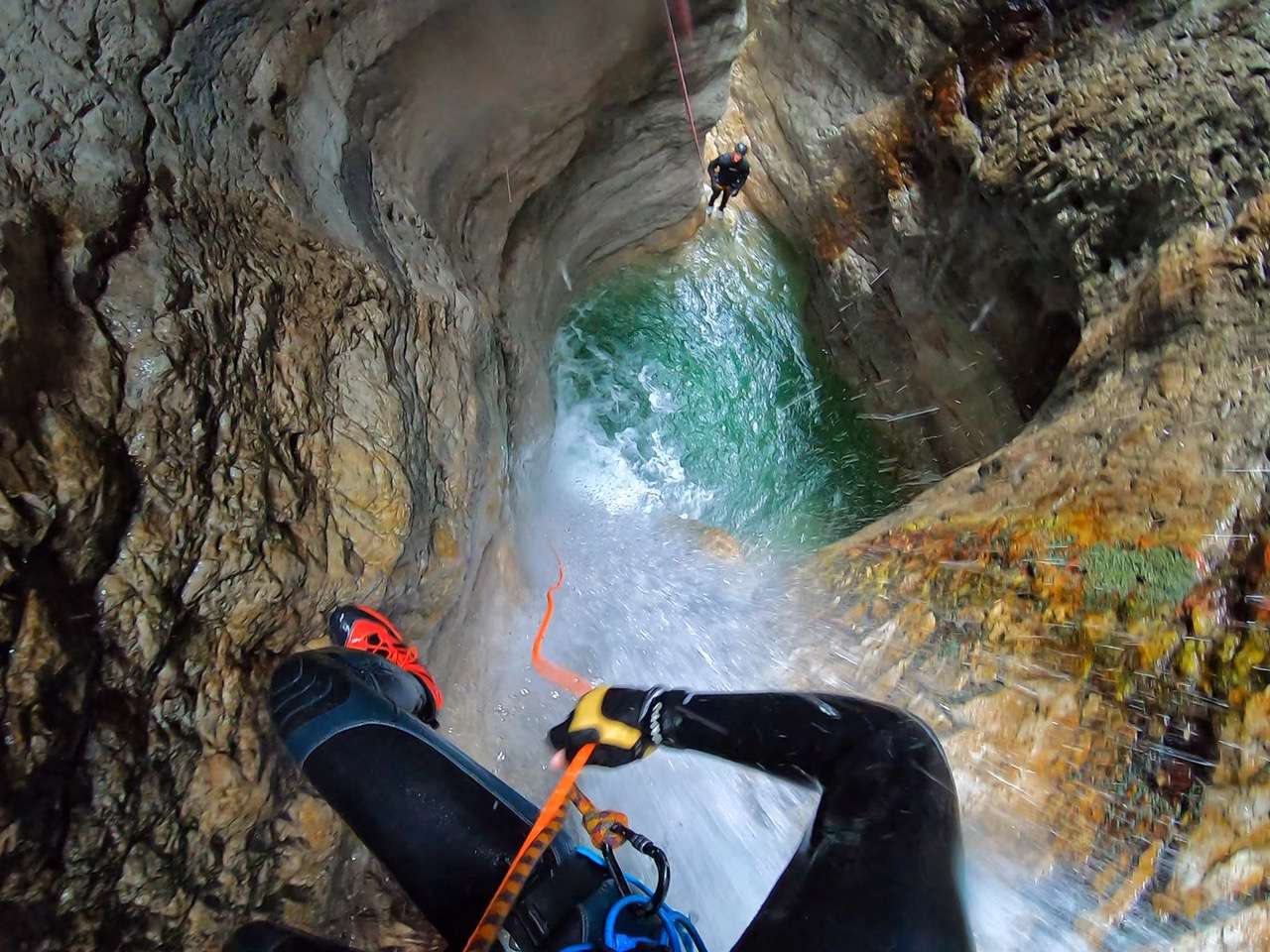
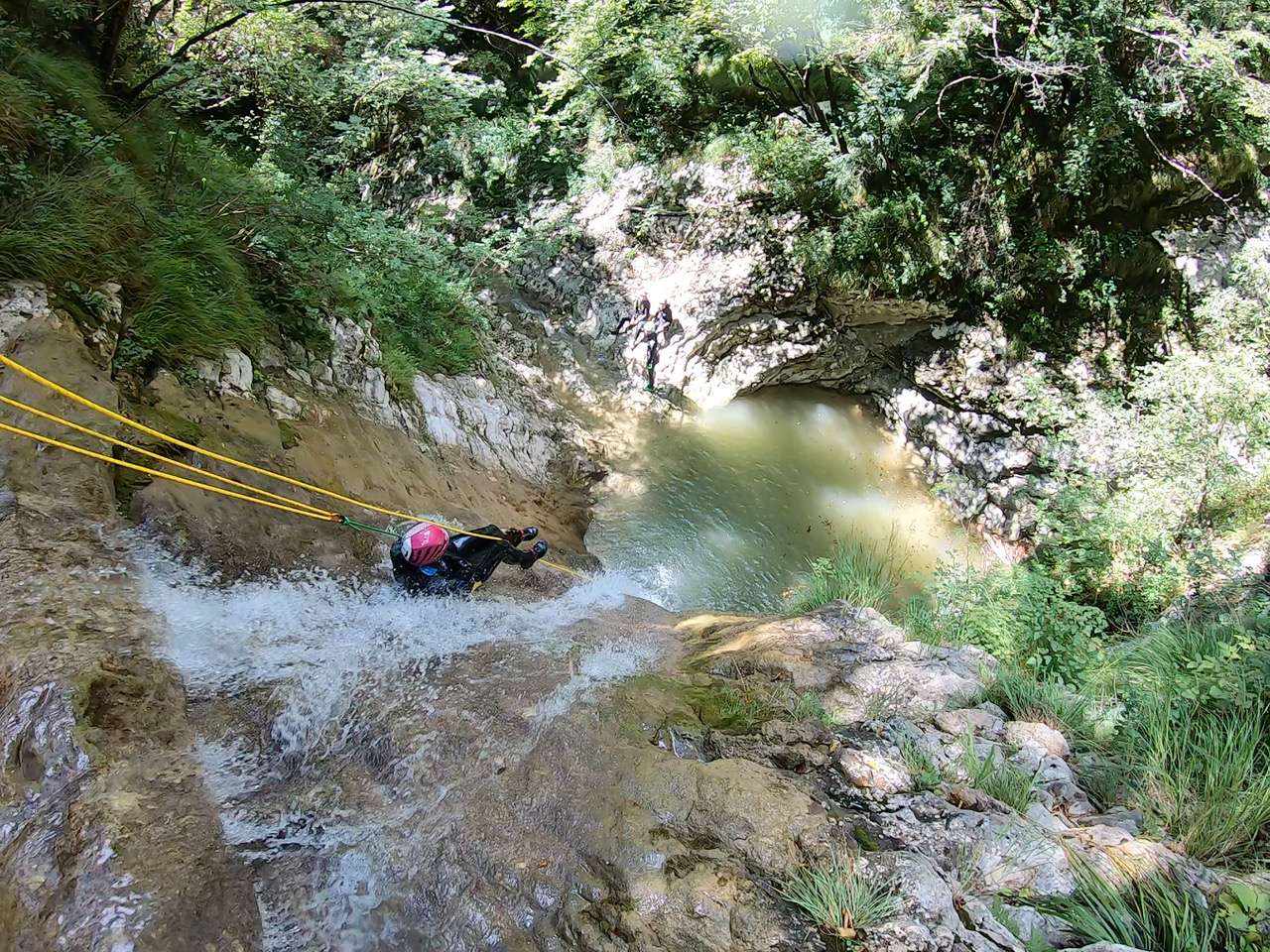
Historical notes on canyoning.
Although the term canyoning may suggest a modern sport born in the United States in the land of the Grand Canyon, this activity began in Europe in the late 1800s.
The patriarch of current canyoning was the French speleologist Edouard Alfred Martel who took his first steps on June 28, 1888, in the caves of the Abime de Bramabiau (The abyss of the bellowing bull), and who in 1905 also made the first exploration of the Gorges du Verdon, both in France. All his explorations obviously had a scientific and not a playful and sporting character like those of today.
But it will be necessary to wait around 1930 before other French speleologists resume this kind of exploration activity and that towards the end of the 1950s they start a systematic exploration of the Pyrenees and Provence gorges, considered by all as the place where the current canyoning has started to take shape.
At the beginning of the 1980s, the exploration of gorges began to be practiced with a slightly sportier and more modern perspective. The transformation initially concerned France, but within a few years it also involved Italy and Spain, which in the meantime also began to have the first groups of speleologists diverted to canyoning.
In Italy canyoning began to take on a truly sporting character in the second half of the 1980s, but small groups of speleologists always practiced this activity. Things began to change in the 90s, when people from the alpine pastures, downhill canoeing, and other sports related to the mountain environment also approached canyoning.
In 1998 the Italian Canyoning Association was born. The birth of the AIC and its dissemination work; the significant contribution of the speleological environments of the CAI and other associations such as the National Mountain League UISP; the greater diffusion of other sports such as rafting and hydrospeed; and obviously also the media, first of all the internet, have contributed, starting from the early years of 2010, to the diffusion of this sport throughout the national territory, which today has about 3,000 regular practitioners.
Canyoning routes are present in all regions, although most of these are concentrated in those of northern and central Italy.
Today canyoning is practiced throughout Europe (in particular France, Spain, Italy, Austria and Greece), in many Eastern European countries, in the USA, Mexico, Brazil, Australia, Nepal and South Africa.
See you next time dear Outdoors!
Silvia Turazza – Garda Outdoors editorial staff
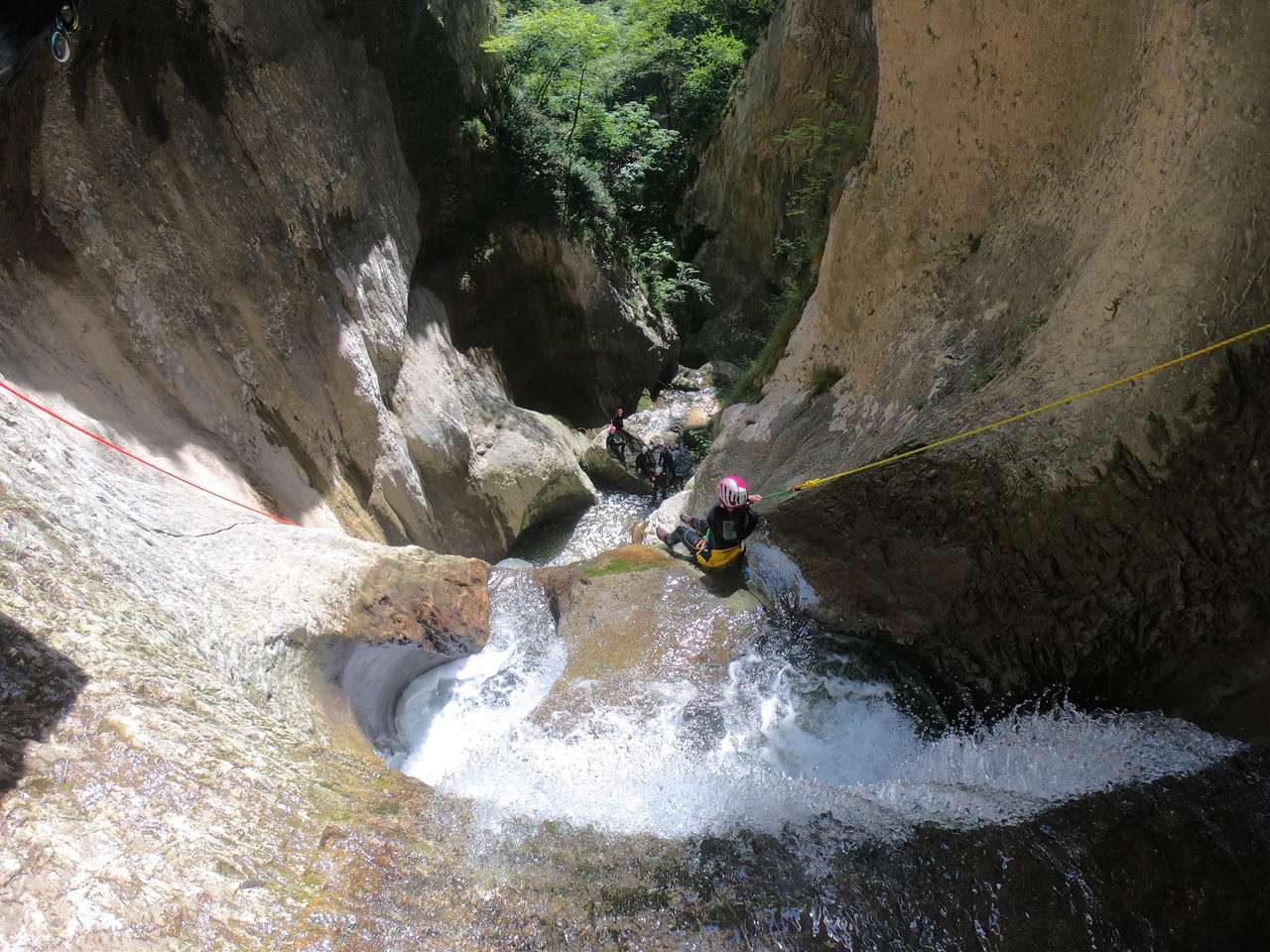
Hotels – Restaurants – Experiences on Lake Garda.
On Lake Garda there are many structures in which to stay, from small and well-kept B&B’s to resorts with wellness centers and beauty services, in the section dedicated to hotels find all the information you need to find the most suitable accommodation for you.
The same goes for restaurants, at this link you will find our selection of restaurants on Lake Garda. Remembering that Lake Garda offers several starred restaurants and the quality of the culinary offer is very high.
There are many activities and experiences you can do on Lake Garda, so we recommend you visit the section dedicated to experiences in our magazine by clicking here.
